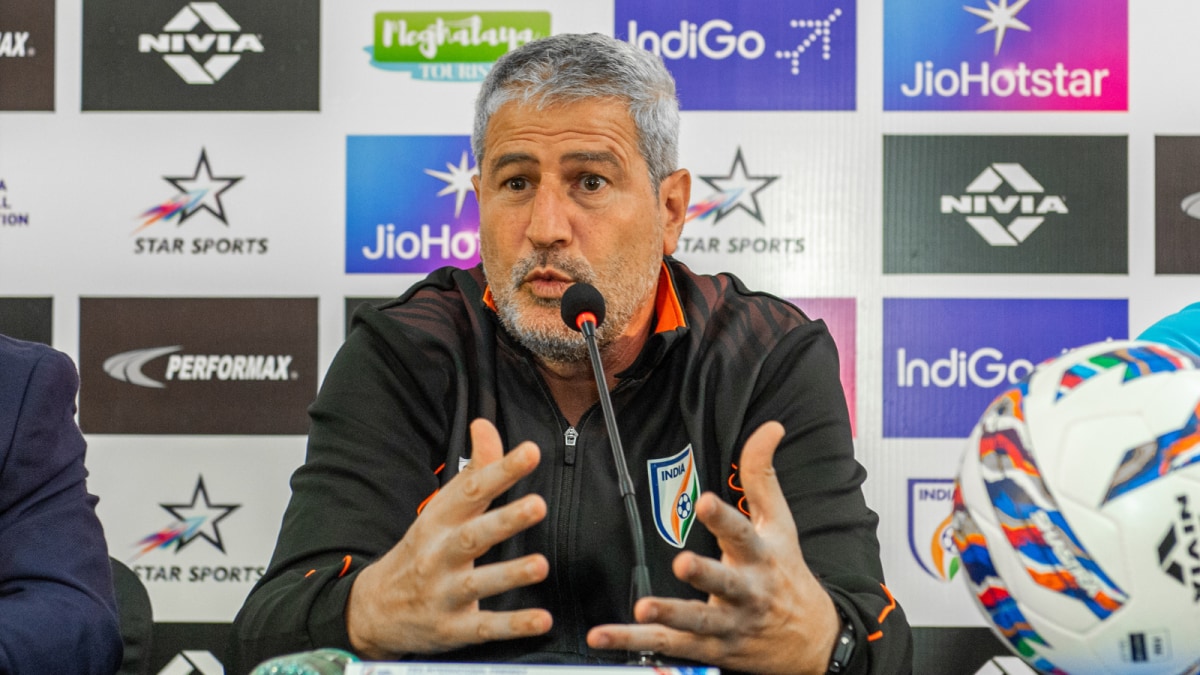ARTICLE AD BOX

As Shubhanshu Shukla and the rest of the Ax-4 crew leave the International Space Station for their return to Earth, one of the lesser-known but groundbreaking experiments they carried out was “PhotonGrav” by Polish neurotechnology firm
Cortivision
. In simple terms, it tested whether humans can communicate directly with a computer using nothing but their brain signals— for the first time ever in space.In an exclusive interview to TOI’s Chethan Kumar,
Wojciech Broniatowski
, CEO & COO of Cortivision, spoke about the experiment, the challenges of brain monitoring in orbit, and why this matters for the future of spaceflight and life on Earth.Excerpts: Q: Can you explain the core objective of the “PhotonGrav” experiment on Axiom-4, and how the microgravity environment supports or enhances your research?
Allow me to start with a different question—can people communicate with a computer using only their brain? Would it work in space? It turns out, nobody had tried it.The core of our experiment was to prove the effectiveness of our technology in space by communicating with a machine without any muscle engagement. I know it sounds a bit complicated, even though the process is very simple.During the experiment, astronauts
Shubhanshu
Shukla and Sławosz Uznański performed mental calculation tasks. This means they put themselves in a deep focus state. Our fNIRS system detected changes in their brain activity and, using our AI, correctly identified whether they were focused or relaxed. On the surface, this seems simple. But if we look closer, the astronauts communicated simple signals—just by thinking—and the computer decoded their message correctly. This was the first time in history that humans communicated directly from their brain with a computer in space.Why microgravity? At Cortivision, we build products specifically designed for extreme environments. Microgravity is unique and very challenging, so if our technology works reliably there, it can handle any challenges on Earth. That makes microgravity testing crucial and a glimpse into the future of brain monitoring technologies. The International Space Station was the perfect place to prove that this fNIRS-based communication works in real space conditions—not just in a lab. And it worked perfectly.We hope this success will open the door for future collaborations with Indian space researchers, universities, and companies.

Shux & Dariusz Zapała PhD from Cortivision during training
Q: Why did Cortivision decide to conduct this specific experiment in space?In the autumn of 2023, Poland launched a call for projects to be done in orbit within the IGNIS mission, giving us a unique chance to push boundaries. At that time, we had already participated in two previous space missions (Ax-2 and Ax-3). We gained experience and understood the challenges astronauts face. So we seized this opportunity to demonstrate brain-computer communication in microgravity and continue developing technology for extreme environments.This mission was special for us because it involved a second Pole in space. You might think that science should be subject-agnostic, but in fact, it really matters who you work with on pioneering projects.
Slawosz
and Shux turned out to be perfect participants to carry such an ambitious experiment.Q: Of the four astronauts on Ax-4, Slawosz was a natural choice. But how and why was Shubhanshu Shukla chosen?Each mission includes a scientific programme. During training, astronauts meet with researchers who present various project proposals. The astronauts then sign up for experiments that interest them or that they feel comfortable with—this is how they express their willingness to participate.Our experiment seemed very appealing, but believe me, there were also projects that required more effort or caused discomfort. So the choice wasn’t always straightforward.We were very keen to include as many astronauts as possible in our study. We’re also hopeful to involve more crew members in future missions, since our equipment will remain on the
ISS
even after the current crew returns to Earth.

The device Shukla and Uznanski used at ISS
Q: Now that the Ax-4 crew has completed two weeks, what specific insights have you gained so far? How many trials did Shux and Slawosz run at the ISS? What did these trials entail? Please also elaborate on the findings.We can’t reveal all the details yet, as the data is protected by personal privacy regulations and will be fully analysed before scientific publications are released. However, we can share that both Shubhanshu and Slawosz successfully completed the experiment three times in orbit. They achieved very strong results in detecting whether they were focused or relaxed.These mental states may sound abstract when we speak about communication—but if you think about the early days of computing, where communication was based on binary “zeros” and “ones,” it’s actually a very similar principle. The astronauts, by changing their mental state, were sending a simple, clear signal that the system could recognise.What’s important is that this was far from obvious. In microgravity, body fluids shift differently—this is why astronauts’ faces often look swollen in space photos. These fluid shifts also affect how the brain’s blood flow works, which could influence how well brain activation signals can be detected. That’s why, before flying to the ISS, the astronauts carried out baseline measurements in Warsaw and Houston. After their return, they will do the same measurements again. This way, we’ll be able to compare how the brain behaves on Earth and in orbit, and precisely assess the differences in our brain-computer interface communication performance.Q: Were there any unexpected results or anomalies observed during the experiment aboard the ISS that could shape future neurosensory or cognitive research in microgravity?Interestingly, after almost two years of preparation, the biggest surprise had nothing to do with the experiment itself—it was a simple technical glitch with the laptop on the ISS. The most advanced part—the brain-reading system—worked exactly as planned, while a regular piece of equipment gave us a little headache.It’s a good reminder that sometimes the most complicated technologies run smoothly because they’ve been tested a thousand times, and it’s the ordinary, everyday things that can surprise you. This experience shows why careful preparation is key, and why testing even the simplest parts of the setup is just as important as preparing the core science.Q: Have the results from Axiom-4 validated or challenged any of your pre-launch hypotheses, and how do you plan to apply this data in terrestrial applications or future missions?The results from the Ax-4 mission gave us a green light and confirmed what we had hoped for. Before the mission, we believed that fNIRS technology could be the best fit for space—more mobile and practical than fMRI, but giving deeper, more precise data than EEG. This mission proved that idea right.This means we now consider fNIRS ready for more advanced use in space—not only for brain-computer communication but also for monitoring astronauts’ mental focus, improving their cognitive training, and supporting them in extreme isolation and stress. In the future, we may even be able to create personalised “attention patterns” for each astronaut. By comparing their real-time focus to this personal pattern, we could detect when their attention drifts and help prevent mistakes during critical mission phases.And no, this has nothing to do with “reading the mind”. We would only track physiological changes, so astronauts’ dreams and thoughts are safe.On Earth, this technology has huge potential as well. We can use it for training pilots, surgeons, or anyone who needs to perform complex tasks under pressure. It could also be applied in neurorehabilitation or mental health monitoring. If our technology works in space—the harshest environment possible—it’s certainly reliable in the demanding environments on Earth.Q: Explain how your device is different from the technologies already available on Earth.First, our technology wasn’t built only for space. In fact, about 90 percent of what we do at Cortivision happens here on Earth. Universities, research centres, and clinical teams already use our fNIRS systems every day to study cognitive brain activity. Scientists don’t have to fly to space to use it—our mission is to make advanced brain monitoring accessible in real-world conditions, whether it’s a hospital, a lab, or a sports field.What makes our technology special is that it works in tough environments where traditional tools don’t. EEG is lightweight but often noisy and uncomfortable in movement. fMRI gives great data but is huge and stationary. Our fNIRS system is the best of both worlds: it’s portable and gives deep insights into how the brain uses oxygen during mental tasks—whether that’s focus, stress, or fatigue.After three space missions, our device has been fully certified for safety by Nasa and remains on the ISS for future astronauts and scientists. Shubhanshu Shukla and Slawosz Uznański have already made history with it—but the device is still in orbit, ready for the next mission. Who will be next?



.png)
.png)
.png)
















 4 hours ago
3
4 hours ago
3









 English (US) ·
English (US) ·